Know Your Nocturnal Neighbors: Nine Owl Calls to Listen For
There's more to owl sounds than just “hoo, hoo.” Each species of owl has its own unique call — sometimes more than one.
If you've heard owl sounds at night around your neighborhood and are wondering about the caller's identity, you're in the right place. We've assembled a collection of different owl sounds below to help you better know these fascinating predators of the night.
Before jumping into specific owl calls, though, let's review a few basics.
Owl Sounds Essentials
Owls call for many of the same reasons other birds do — to claim and defend territories, to attract mates, and to keep in contact with each other. Being able to identify calls is particularly important when it comes to owls, however, because their nocturnal habits mean they can be much easier to hear than to see!
Although owl calls are now commonly associated with Halloween, their cultural and historical significance extends far beyond a single spooky night. In North America, many Indigenous cultures consider hearing the call of an owl to be a bad omen, while Harriet Tubman used her imitations of owl calls as signals on the Underground Railroad.
Because owls typically claim territories and find mates during the winter, the best time to hear them can be in January and February, but it's possible to hear owl sounds year-round. Listen for them at dawn and dusk, when their active periods briefly overlap with ours. Just be sure to keep your distance and be respectful if you're lucky enough to find one — owls can be sensitive to disturbance by curious humans.
1) Eastern Screech-Owl
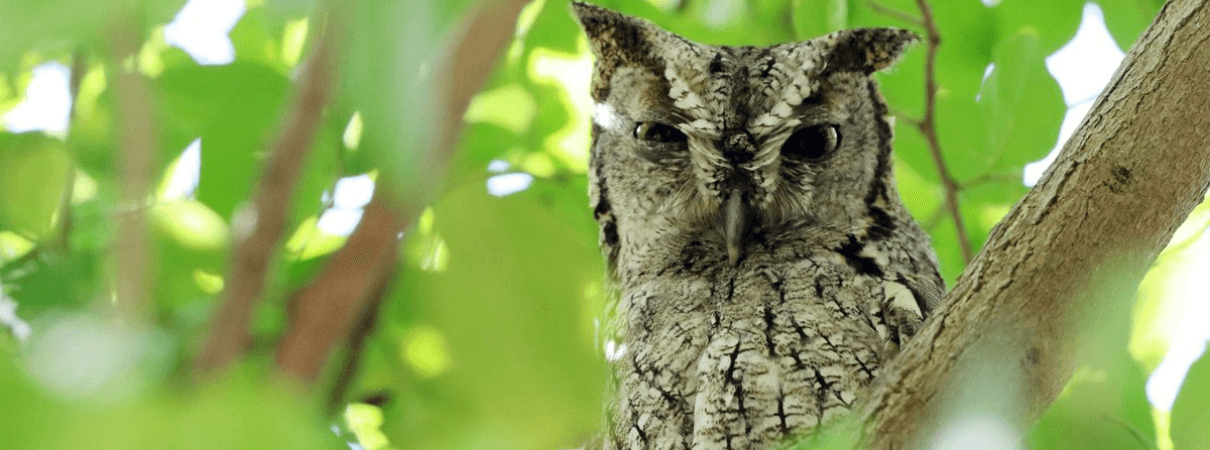
Eastern Screech-Owl. Photo by Jesús Franco.
(Audio: Lance A. M. Benner, XC513355. Accessible at https://www.xeno-canto.org/513355 ·Paul Driver, XC138095. Accessible at https://www.xeno-canto.org/138095 )
Eastern Screech-Owls have two main calls. One is a descending, almost horse-like whinny, used to defend territories. The other is an extended trill on a single pitch (sound two) that's used to attract mates and maintain contact with family members. Although they're common and seem to thrive in suburban neighborhoods, Eastern Screech-Owls are declining in some parts of their range. Listen for these little owls almost anywhere in the U.S. east of the Rockies.
2) Barred Owl
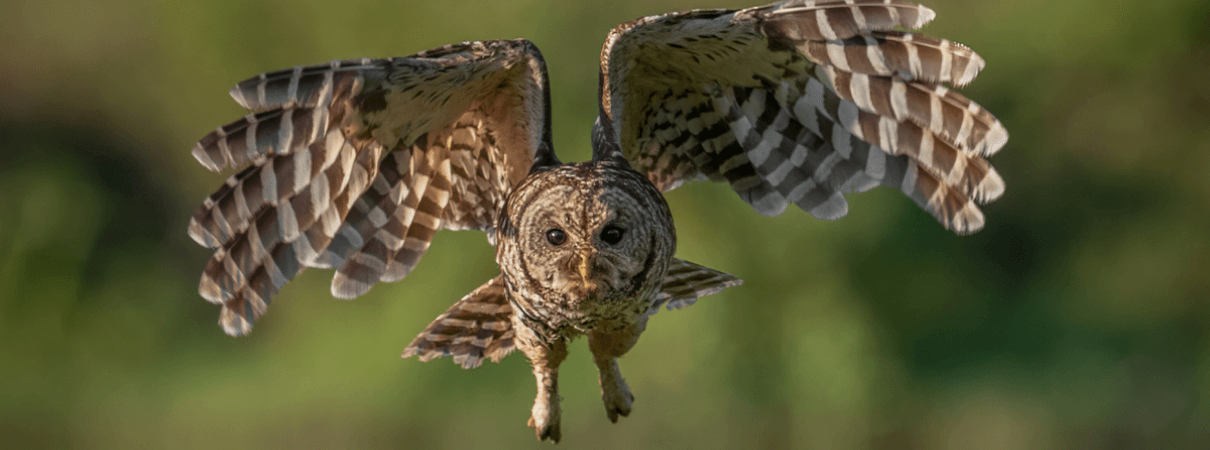
Barred Owl. Photo by Harry Collins Photography/Shutterstock.
(Audio: Steve Hampton, XC602835. Accessible at https://www.xeno-canto.org/602835)
Ask a birdwatcher what a Barred Owl sounds like and they'll likely respond, “Who cooks for YOU? Who cooks for YOU all?” Sometimes when a pair begins to duet, though, this devolves into owl noises that Birds of the World calls “a raucous jumble of cackles, hoots, caws and gurgles.” Also unlike many other owls, the Barred Owl is frequently heard during the day, as well as at night. Common in the eastern U.S., these vocal birds have also moved into the Northwest in recent decades, where they compete for habitat with their close cousin, the Threatened “Northern” Spotted Owl.
3) Great Horned Owl
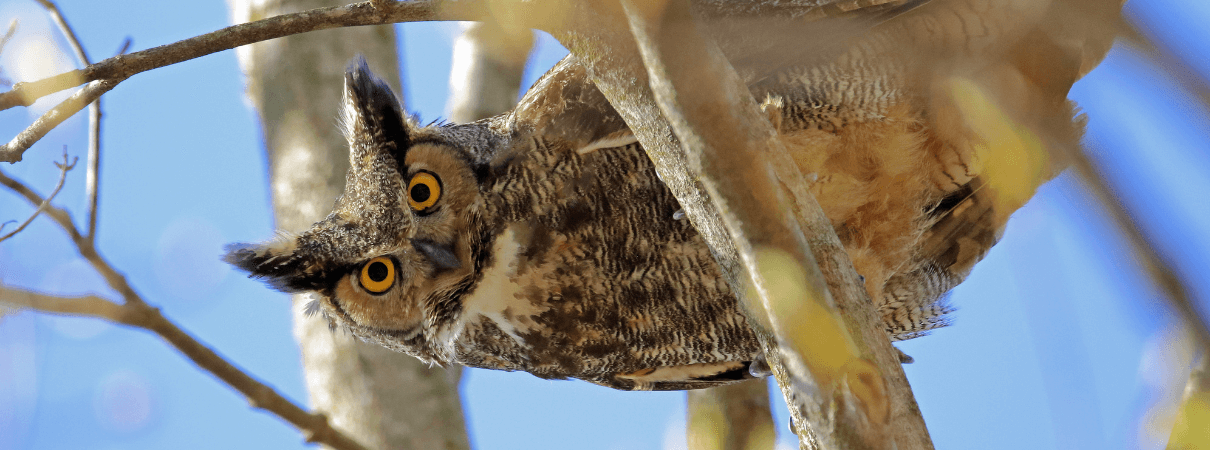
Great Horned Owl. Photo by Todd Maertz/Shutterstock.
(Audio: Bruce Lagerquist, XC5050978. Accessible at https://www.xeno-canto.org/505978)
If you've heard an owl call during a TV show or movie, it's probably a Great Horned Owl sound. This is the quintessential hooting owl of the United States, found throughout North America and in much of South America as well. Like Eastern Screech-Owls, Great Horned Owls are considered common and can adapt to a range of habitats, including cities, but are experiencing a gradual decline. Breeding bird surveys in North America show that their numbers have dropped by around 33 percent over the past five decades.
4) Barn Owl

Barn Owl. Photo by Ondrej Prosicky/Shutterstock.
(Audio: Paul Lenrumé, XC632419. Accessible at https://www.xeno-canto.org/632419)
Barn Owls emit a bloodcurdling shriek that almost sounds like a classic horror movie scream — yikes! They use variations of this scream call both to communicate with each other and to warn away potential threats. Barn Owls are the most widespread of all owl species, found on every continent except Antarctica. Although their habit of flying low to the ground while hunting makes them vulnerable to collisions with cars, their populations are stable worldwide. In many parts of the eastern U.S., however, they are declining.
5) Burrowing Owl
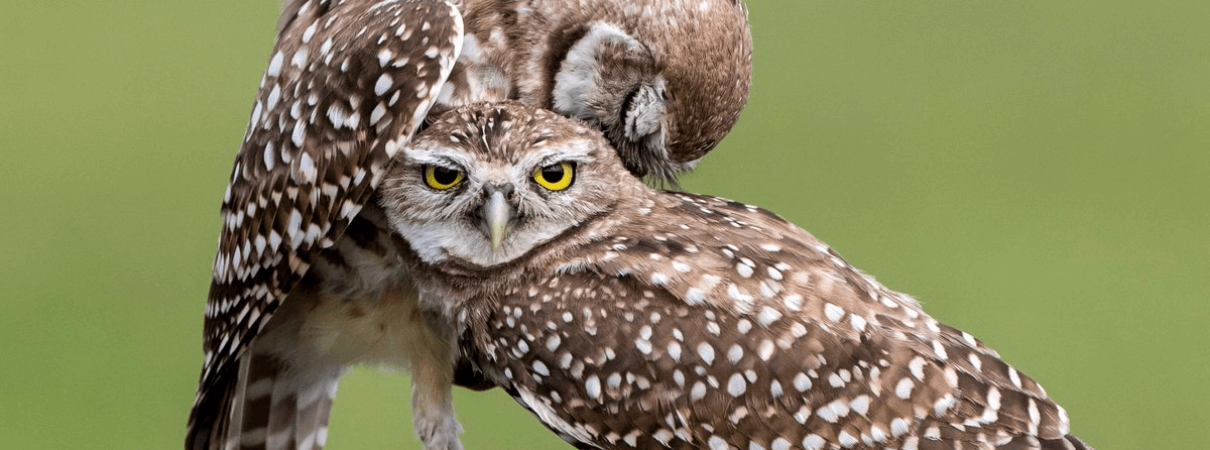
Burrowing Owls. Photo by Bob Branham/Shutterstock.
(Audio: Peter Ward and Ken Hall, XC613769. Accessible at https://www.xeno-canto.org/613769)
Don't listen for the sounds of Burrowing Owls coming from trees — as their name suggests, these owls live in and on the ground! Their main call is a rather high-pitched (compared to other owls) “coo cooooo,” made by the male as he woos a mate and defends a territory. Burrowing Owls are found in grassland and arid habitats throughout North and South America, including in the central and western U.S., and also in Florida. They're declining throughout their range, and the U.S. Fish and Wildlife Service officially considers them a species of conservation concern.
6) Western Screech-Owl

Western Screech-Owl. Photo by lalcreative/Shutterstock.
(Audio: Thomas Beverly, XC436647. Accessible at https://www.xeno-canto.org/436647)
Western Screech-Owls look almost identical to their eastern counterpart, but their call is different. Instead of a whinny or a trill, they produce a series of hoots that speed up toward the end, like a bouncing ball settling to the ground. Found west of the Rockies, these owls are doing well overall, although one subspecies that occurs along the Pacific coast is listed as Endangered in Canada.
7) Northern Saw-whet Owl
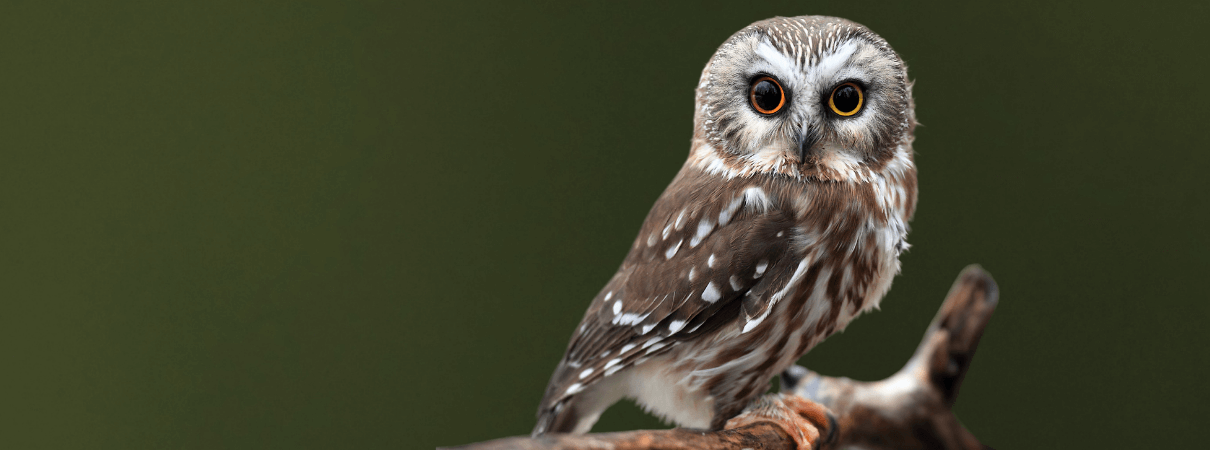
Northern Saw-whet Owl. Photo by mlorenz/Shutterstock.
(Audio: Lance A. M. Benner, XC552283. Accessible at https://www.xeno-canto.org/552283)
Northern Saw-whet Owls actually get their name from the sounds they make: One of their calls, perhaps the repetitive “toot-toot-toot-toot” males use to announce their presence on their territory, reminded early ornithologists of the sound of a saw being sharpened on a whetstone. These tiny owls prefer coniferous forests but can be found in a variety of forest types in many parts of North America at one time of year or another. Although their populations are declining, their secretive and exclusively nocturnal behaviors make them hard to study.
8) Snowy Owl
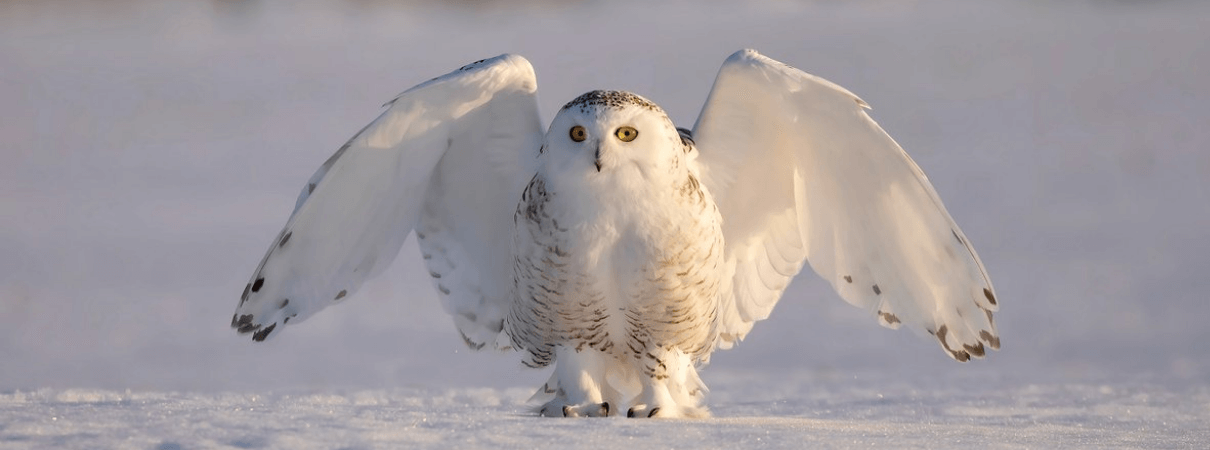
Snowy Owl. Photo by Jim Cummings/Shutterstock.
(Audio: Tero Linjama, XC343144. Accessible at https://www.xeno-canto.org/343144)
The deep, hoarse hoots of the Snowy Owl can be heard from up to seven miles away on the open Arctic tundra. Famous for their white plumage, Snowy Owls have what's called a circumpolar range, spanning northern regions of Eurasia as well as North America. The IUCN Red List categorizes this species as Vulnerable. This bird stands to lose about half of its current North American habitat if the climate warms by 1.5 degrees Celsius.
9) Elf Owl

Elf Owl. Photo by Susan E. Viera/Shutterstock.
(Audio: Scott Olmstead, XC363557. Accessible at https://www.xeno-canto.org/363557)
The smallest owl in the world, the Elf Owl lives in the woodlands and Saguaro cactus-studded deserts of the southwestern U.S. and Mexico. This species' “chatter song” consists of a fast series of five to seven high-pitched notes that some have compared to the yipping of a small dog. Now rare in some parts of their range, Elf Owls are declining due to habitat loss. The species is listed as Endangered in California.
How to Help Owls
We all can do our part to protect owls.
American Bird Conservancy and our Joint Venture partners have improved conservation management on 6.4 million acres of U.S. bird habitat — an area larger than the state of Maryland — over the last ten years. This is a monumental undertaking, requiring the support of many, and you can help by making a gift today.
Policies enacted by Congress and federal agencies, such as the U.S. Fish and Wildlife Service, have a huge impact on America's birds. You can help shape these rules for the better by telling lawmakers to prioritize birds, bird habitat, and bird-friendly measures. To get started, visit ABC's Action Center.
Finally, don't overlook the impact you can have at home. Living a bird-friendly life can have an immediate impact on owls and the other birds around you. Doing so can be as easy as adding native plants to your garden, avoiding pesticides, and keeping cats indoors. To learn more, visit our Bird-Friendly Life page.
 | Rebecca Heisman is a science writer based in eastern Washington. Her first book, which tells the scientific backstory of how we know what we know about bird migration, will be out in spring 2022. |


















































